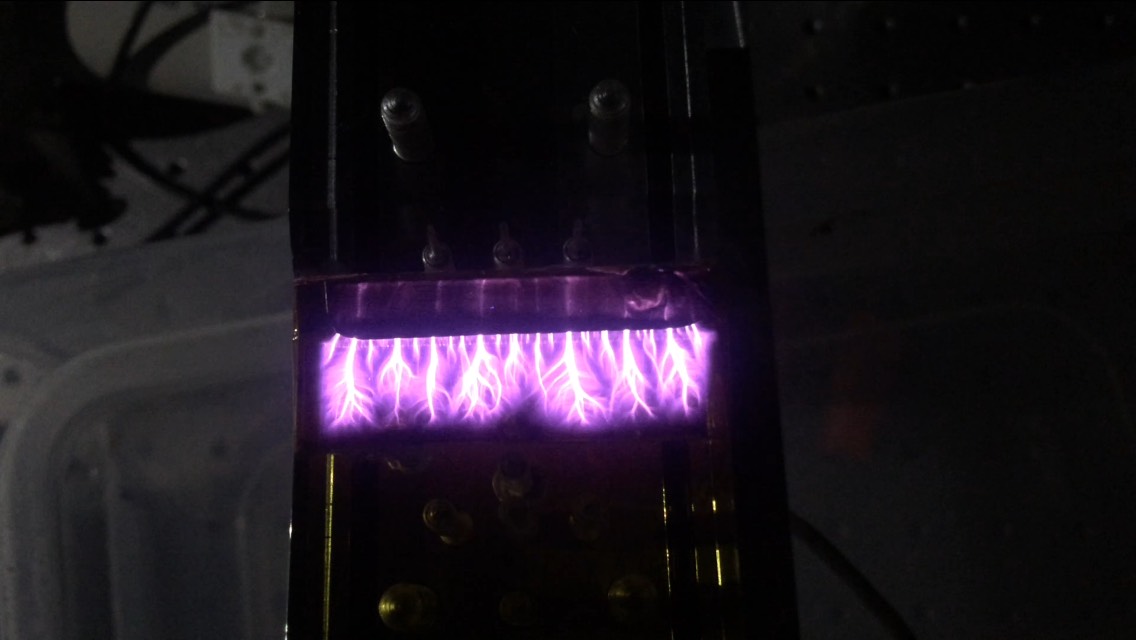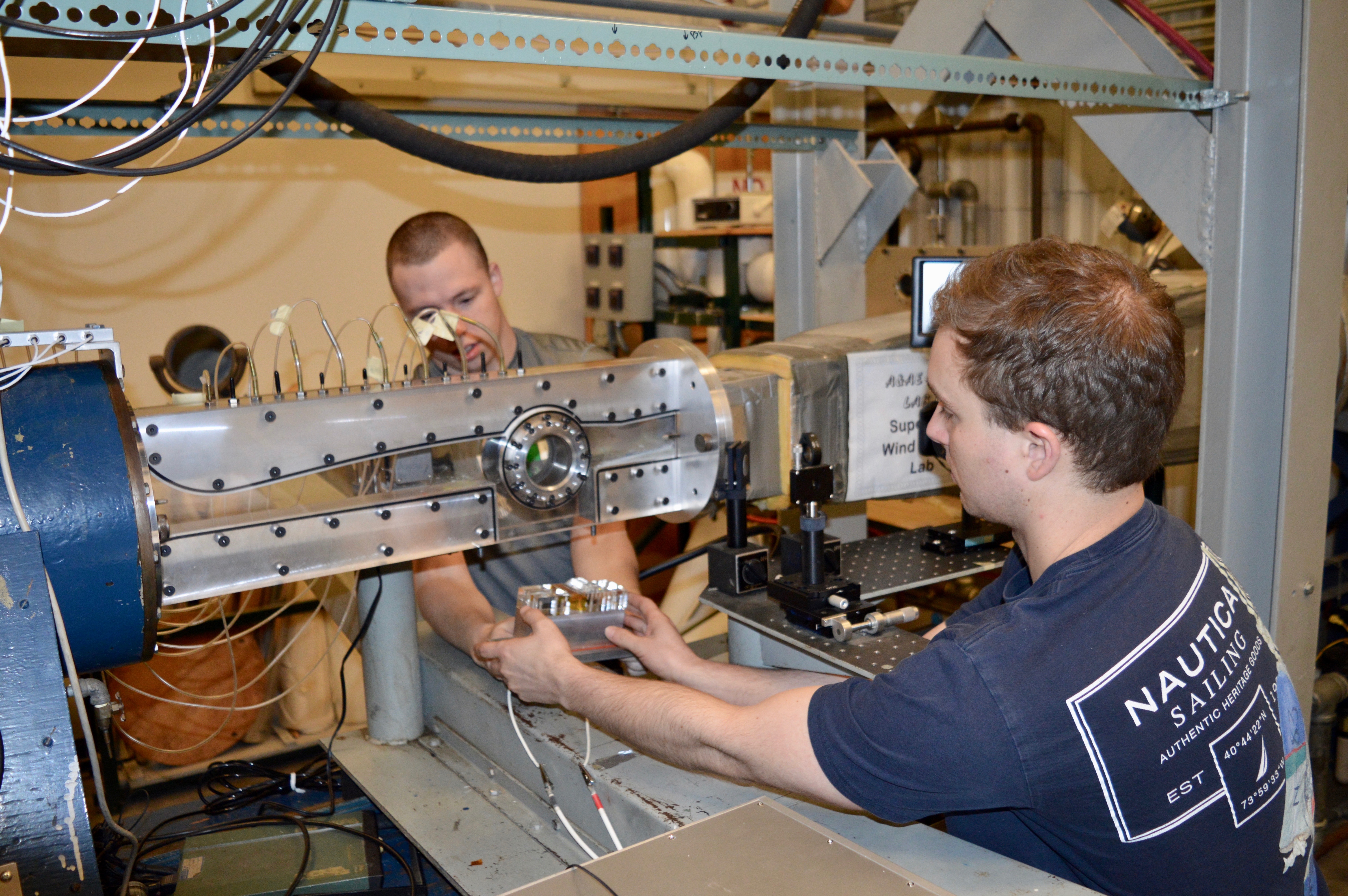Sparkplugs are so Nineteenth Century

The invention of the sparkplug is generally credited to Belgian engineer Étienne Lenoir in 1860, and this technology is still used in engines today. If Prof. Sally Bane’s research is successful, however, sparkplugs could be replaced by high-tech nanosecond-pulse electrical discharges, which would reduce emissions and improve fuel efficiency. A member of the Cold Plasmas Preeminent Team, Bane leads a talented and enthusiastic team of graduate and undergraduate student researchers at Purdue’s Aerospace Sciences Laboratory.
Ph.D. student Ravichandra Jagannath came to Purdue because of the strong reputation of the AAE department for combustion and propulsion applications, and he is working on creating volumetric discharges, as opposed to localized sparks. Using these plasma discharges, he says that it should be possible to achieve simultaneous ignition at multiple locations, which would reduce ignition delay and mitigate emissions. He is currently building a small test chamber where he will burn fuel in the presence of plasma, and use schlieren photography, chemiluminescence, and emission spectroscopy to test these ideas. If the approach works out, it could also “be useful in high-speed combustion devices like a rotating detonation engine,” says Jagannath.

Undergraduate student Paul Stockett became interested in plasma after hearing about it in his aerodynamics courses. A friend introduced him to Prof. Bane, who had an opening for an undergraduate researcher. “I’ve been mainly working on time-resolved imaging of the plasma for flow characterization,” says Stockett. A double major in nuclear and aerospace engineering, he is a great enthusiast for the research and plans to pursue a graduate degree in the plasma area.

Bhavini Singh also obtained her bachelor’s degree from Purdue, and decided to stay on for graduate work. Her research focuses on using optical techniques to examine the transient flow field generated by a pulsed plasma discharge. These techniques include particle image velocimetry (PIV) and quantitative schlieren photography methods including schlieren image velocimetry (SIV) and background-oriented schlieren (BOS). She aims to “fully characterize the flow field from the time the shock wave is generated [by the discharge] to milliseconds after the flow” is initiated, which has never been done before.
Kyle Newnam did his undergraduate work at Embry-Riddell University, and decided to pursue his Master’s degree at Purdue because he “definitely wanted to go somewhere that had the kind of resources that Purdue does.” He will graduate soon, and will move to a job with Northrop-Grumman working on supersonic propulsion integration. He is currently working on controlling a model inlet flow using pulsed electrical discharges. One of the biggest challenges, he says, has been to isolate the electrodes to keep the actuator from directly arcing. Through laborious trial and error, he has found some configurations that work well.
Prof. Bane’s work on plasma-enhanced combustion is funded by the Air Force Office of Scientific Research. For more information, see her website https://sites.google.com/site/baneresearchgrouppurdue/ .